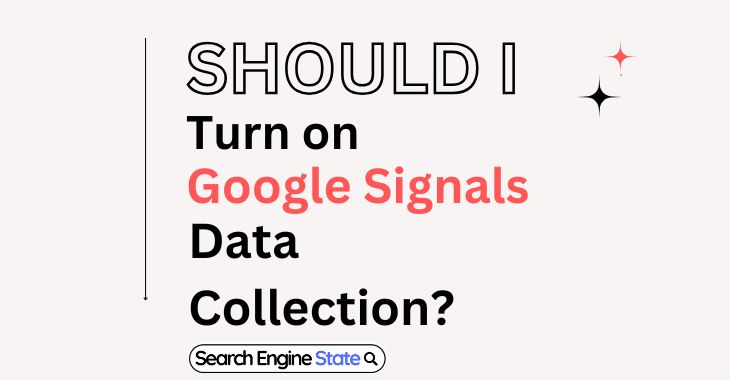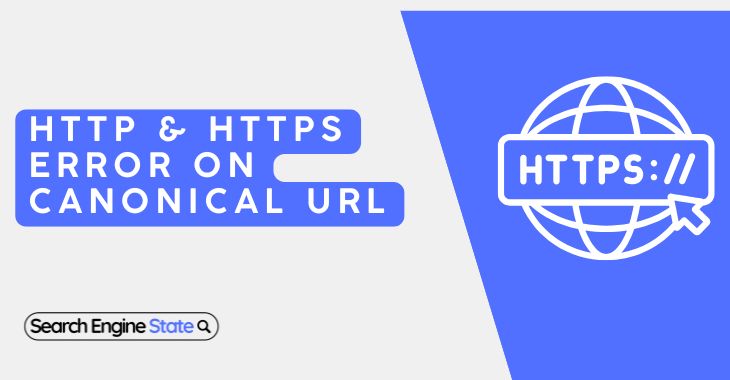Should I Turn on Google Signals Data Collection: Explained

In digital analytics, it is important to know how user behaviors are distributed across devices in order to formulate an effective marketing strategy and enhance the user’s experience. Google Signals offers a great solution to this as it supplements your Google Analytics reports. But should you enable Google Signals data collection? This guide investigates the benefits, pros and cons and good practices with which to help you arrive at an educated decision.
What is Google Signals?
Google Signals is provided by Google Analytics as a tool that uses information provided by users who have logged in to their Google account and have turned on the Ads Personalization setting. Enabling Google Signals allows for more thorough identification of user activity across the internet and devices, thereby enabling better marketing campaigns.
Image Suggestion:
Flowchart illustrating the way Google Signals monitors user behaviour across and across multiple devices.
Description: Figure to show the interaction between a user and a set of devices (smartphone, tablet, laptop) and how Google Signals integrates this information to create a cohesive representation of the user’s behavior.
Benefits of Enabling Google Signals
By embracing and activating Google Signals, will change fundamentally what you can do and understand about the set of information. Here are the key benefits:
Cross-Device Reporting
Detailed Explanation:
Using Google Signals it is possible to derive users’ activities on your website or your app on various devices. For instance, a user might discover your website on their smart phone, browse on a tablet, and buy on a desktop. Cross-device reporting aggregates these interactions into a single, consistent user experience, and provides a consolidated view from which to interpret the customer experience.
Advantages:
- Holistic View: Get a general insight into user behaviour which is bounded by the piecemeal information supplied by the observation of individual devices.
- Pattern Identification: Identify typical mechanisms and relations, enabling you to engineer the user experiences for all devices.
- Enhanced Personalization: Adjust your marketing campaigns to a typical combination of user interactions and reap the benefits of more targeted and effective campaigns.
Enhanced Remarketing
Detailed Explanation:
[A system] can be developed with the ability to utilize the Google Signals, to construct more precise remarketing audiences with the user behavior through device range. For example, if a user abandons a shopping cart on their mobile device, you can target them with personalized ads on their desktop to encourage completion of the purchase.
Advantages:
- Increased Conversion Rates: Exhaustively target users with insightful Ads on their previous interactions in order to raise their conversion rate.
- Efficient Budget Allocation: Concentrate on your advertising budget on the best performing target audiences and increase return on investment.
- Seamless User Experience: Provide a pleasant, fulfilling, advertising experience resulting in higher levels of user satisfaction and adoption.
Improved Demographics and Interests Data
Detailed Explanation:
Google Signals is then providing richer demographics and interest data to your analytics. This includes demographics (age, gender, household income), and even specific interests, allowing you to better understand your potential audience segments.
Advantages:
- Targeted Marketing: Develop more targetted marketing plans, using concrete and detailed information on the audience.
- Enhanced Segmentation: Obtain precise target audiences for personalized messaging and personalization of experiences.
- Better Content Strategy: Align your content strategy with the demographics and interests of your audience to achieve both maximum engagement and relevance.
Increased Accuracy of Data
Detailed Explanation:
By combining data from users logged into their Google accounts, Google Signals improves the fidelity of your analyses. This embedding enables its usefulness in the size of differences caused by cookie limitation and ad-blockers in order to obtain a more reliable data set.
Advantages:
- Reliable Insights: Take data-driven decisions with more assurance, as your analytics are driven by reliable and complete data.
- Reduced Data Gaps: Reduce the effect of data loss due to cookie restrictions and ad blocking, in order to see the fuller picture of the user behaviour.
- Enhanced Reporting: Develop more targeted and meaningful reports, and as a result, maximise the quality of analytics.
Image Suggestion:
Infographic featuring the main advantages of Google Signals including cross-device tracking, improved remarketing and better demographic data.
Description: All benefits should be graphically represented by icons and concise descriptions in the infographic, in order to elucidate them immediately at a glance.
Considerations Before Enabling Google Signals
Despite its potential, Google Signals remains sensitive to a number of factors that need to be taken into account before turning it on.
Privacy Concerns
Detailed Explanation:
The activation of Google Signals relies on the ingestion of information provided by users who are accessing their Google account. This does raise privacy concerns, since it is monitoring user behavior across an increasing number of devices and platforms.
Considerations:
- User Privacy: The privacy of users always needs to be protected, and data collection must conform to privacy regulations.
- Data Security: Implement robust data security controls to prevent unauthorized release and breaches of collected information.
- Ethical Practices: Use the data ethically and do not abuse or exploit the data in collecting and analysing.
User Consent and GDPR Compliance
Detailed Explanation:
If you work in areas with very strict data protection legislation, such as the General Data Protection Regulation (GDPR), explicit user consent for data collection must be obtained. Nonadherence can result in serious fines and reputational harm.
Considerations:
- Explicit Consent: To make sure you comply with GDPR regulations, ensure that users give explicit consent for their data to be collected.
- Transparency: Provide users with clear information on what data is being collected, why, and how it will be used.
- Opt-Out Options: Ensure users have the option to opt-out of data collection if they wish to do so, respecting their preferences and privacy rights.
Data Thresholds and Sampling
Detailed Explanation:
Google Signals may trigger data limits to maintain privacy and therefore implement data sampling [3]. It, therefore, suggests that for certain reports, especially those concerning private data, it may not be possible to obtain the full data sets.
Considerations:
Data Granularity: [Note that] the data sampling may change the granularity of your results and thus limit the degree to which your results can be deepened.
Impact on Reporting: Be aware that data sampling can affect the accuracy and the validity of some reports, and results should be carefully interpreted.
Mitigation Strategies: Formulate strategies to mitigate the impacts of data sampling, such as PI_KPIs _weight prioritization and report configuration optimizing.
Impact on Data Processing
Detailed Explanation:
Enabling Google Signals will lead to an increase in number of data items processed by Google Analytics. Although this improves the depth of your understanding, it can at the same time result in higher processing time and higher storage space depending on your analytics setup.
Considerations:
Infrastructure Capacity: Make sure that your analytics system is equipped to handle the increased data volume without any performance degradation.
Processing Times: Just expect longer processing times, on which the timeliness of your data insights is also dependent.
Cost Implications: Consider the expense which may become tied up when data and storage needs are increasing.
Image Suggestion:
Data privacy aspects and scheme of user agreement for activating Google Signals, flowchart.
Description: The flowchart shall describe how to acquire users’ consent, guarantee GDPR compliance, and handle privacy issues in a visual way, taking users step by step through the process.
Best Practices:
In order to fully leverage the value of Google Signals and to mitigate any potential risks, below is a set of best practices.
Ensure Compliance with Privacy Laws
Detailed Explanation:
Think twice before activating Google Signals, such as regulatory privacy laws, for your jurisdiction, and your industry. Steps to be taken towards compliance with regulations such as GDPR or the California Consumer Privacy Act (CCPA).
Best Practices:
Legal Consultation: Seek legal counsel to establish the exact requirements and responsibilities under applicable privacy statutes.
Compliance Audits: Perform periodic audits to maintain compliance with privacy regulations.
Documentation: Make complete documentation of data collection and processing procedures to show compliance.
Inform Users About Data Collection
Detailed Explanation:
Transparency is key to building trust with your users. Update the website’s privacy notice in a way that explicitly states the collection of data by Google Signals. Please explain to users the nature of how their data is being used and offer choices to opt out.
Best Practices:
Clear Communication: In simple terms and without technical jargon, describe the data gathering techniques in your privacy policy.
Opt-Out Options: Provide easy options for refusing data collection if one is going to submit data.
Regular Updates: Keep users informed about any changes to your data collection practices and privacy policy.
Regularly Review Data Settings
Detailed Explanation:
Check your Google Analytics settings regularly to ensure that Google Signals is configured correctly. Read the data being collected, and modify it as required to reach business objectives whilst complying with all relevant legal requirements.
Best Practices:
Routine Checks: It is recommended to regularly review the Google Analytics settings in order to confirm the correct settings and to maintain data validity.
Data Audits: Carry out data audits to make sure that the data being collected is in line with your ultimate marketing goals and regulatory requirements.
Adjustments: Set or adjust parameters and configuration as per audit findings and changing business requirement.
Utilize Enhanced Features Wisely
Detailed Explanation:
Leverage the built-in capabilities of Google Signals (cross-device reporting and smart/advanced remarketing) to their full extent to derive the value of your analytics. Reasonably, use these facts as a springboard to rethink and optimize your marketing tactics and increase user engagement.
Best Practices:
Feature Exploration: Demonstrate and analyze the features offered for Google Signals in order that they can be exploited to the full.
Strategic Implementation: Take steps to implement advanced functions in a strategic way, targeting functions that can have the highest possible impact within your marketing activities.
Performance Monitoring: Routinely monitor the performance of the augmented features with the aim to confirm whether the augmented features are giving the desired effect.
Image Suggestion:
Checklist diagram that presents recommendations to allow for Google Signals implementation, such as compliance, user disclosure, and periodic data reviews.
Description: The list should be presented with the list of best practices in an easy to follow and easy to implement format, with each best practice accompanied by the corresponding icon.
Conclusion
Enabling Google Signals data collection can significantly enhance your understanding of user behavior across multiple devices, leading to more effective marketing strategies and improved user experiences. However, an optimal compromise between the benefits and the privacy aspect needs to be achieved and they are applicable according to the law. Through the application of the highest practices and the transparency to end users, it is possible to capitalize on the power of Google Signals, without compromising the trust and data integrity of end users.






